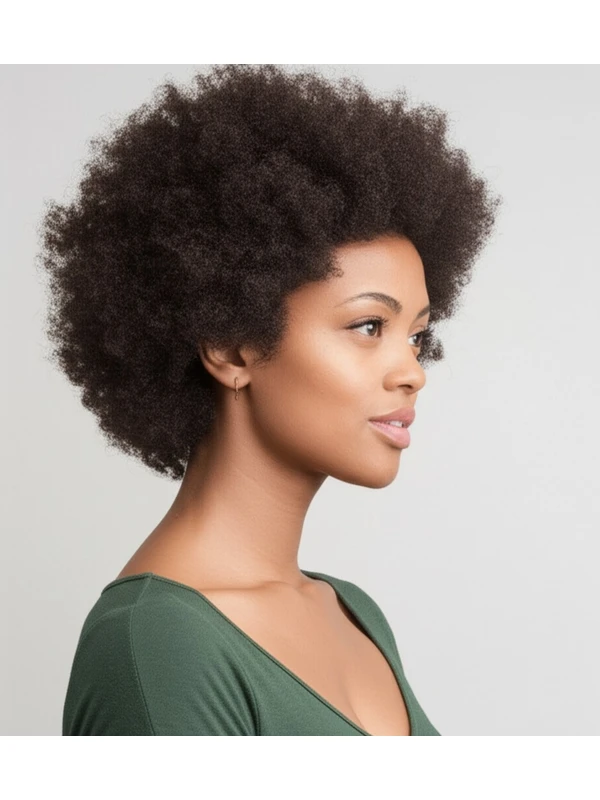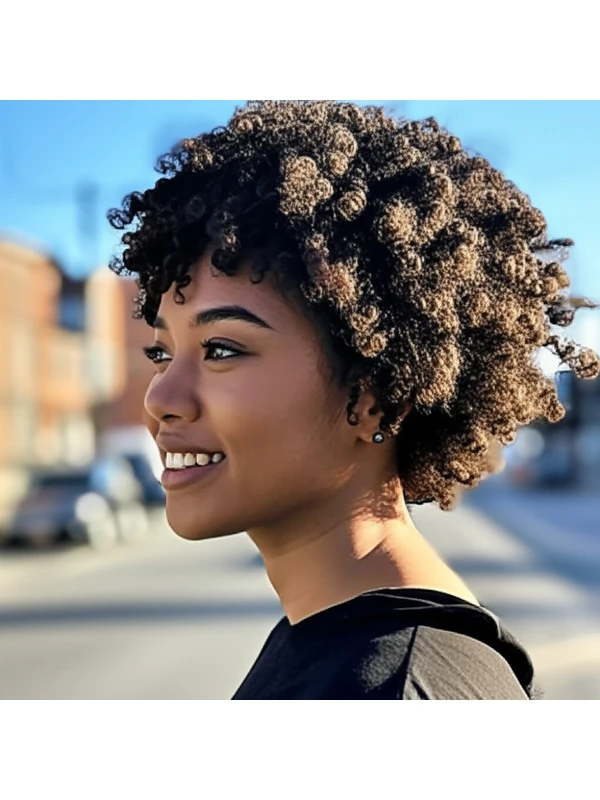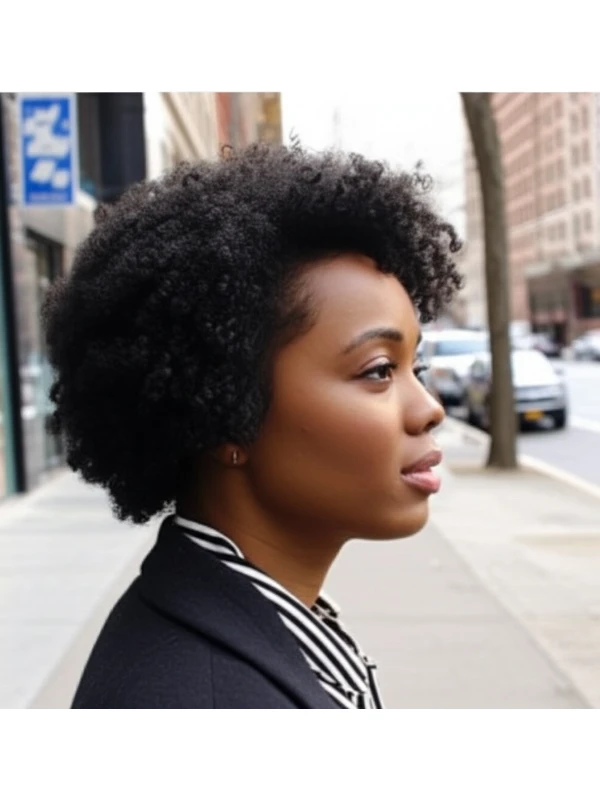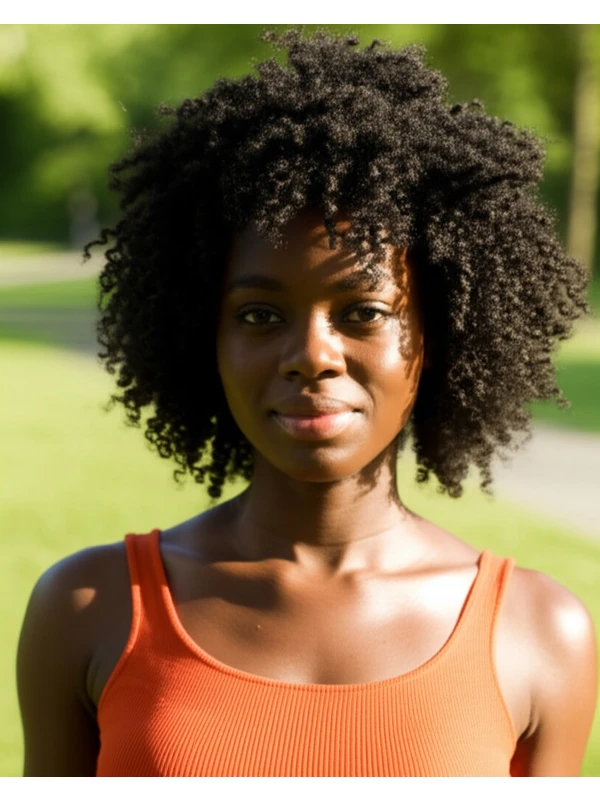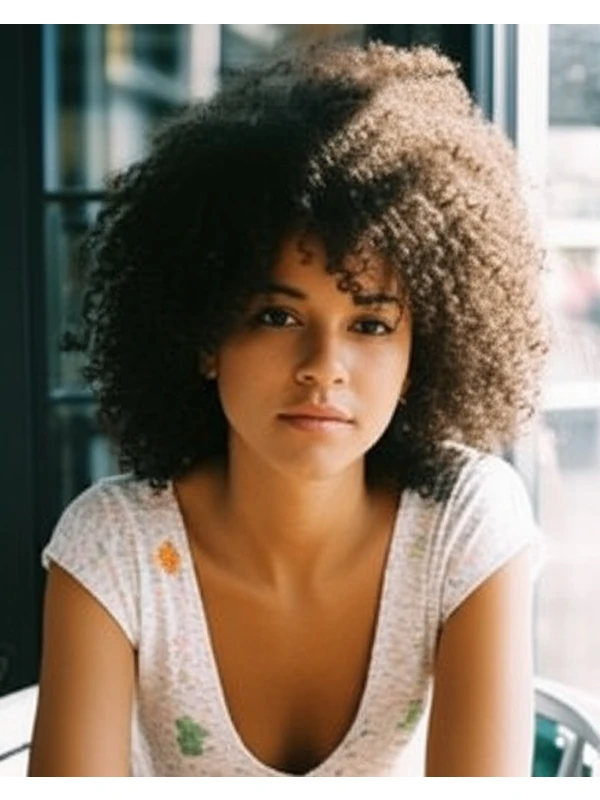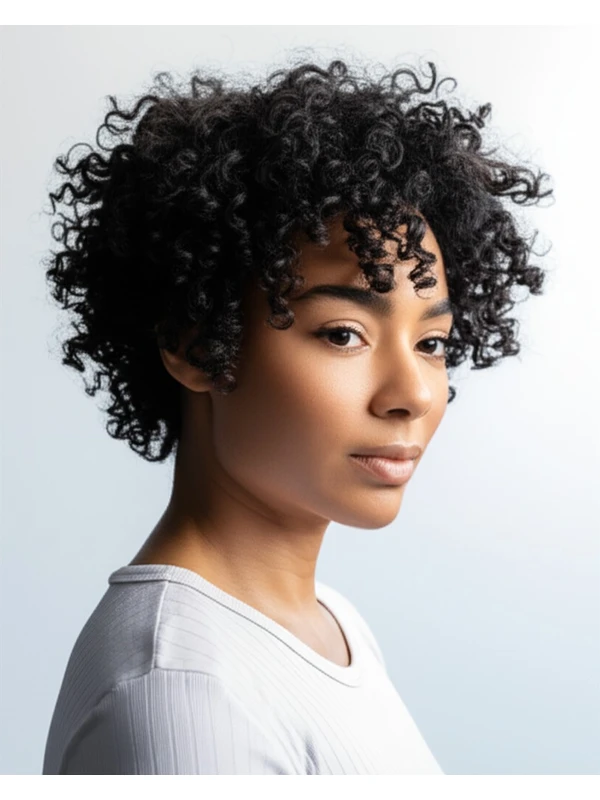#The Tapered Afro: A Celebration of Natural Texture
The tapered afro is a classic hairstyle that’s seeing a beautiful resurgence! It's more than just an '80s throwback; it's a versatile, empowering style that celebrates natural hair texture while offering structure and definition. This guide will break down everything you need to know about the tapered afro – from its origins to how to make it work for you.
#1) Background & Definition: What is a Tapered Afro?
The tapered afro combines two key elements: an afro (a rounded, voluminous shape on top) and tapering (gradually shortening hair around the sides and back). Think of it as a controlled explosion!
- Cut Geometry: The core is maintaining height at the crown while neatly reducing volume towards the hairline. Tapering typically starts higher up near the part line and gradually decreases in length down to the neck and ears.
- Key Features: Clean lines, defined shape, showcases natural texture, offers a balance between boldness and sophistication.
- Typical Length Ranges: The top can range from 3-6 inches (7.5 - 15 cm), while the taper itself might go as short as 0.5 inches (1.25cm) at the hairline to slightly longer depending on preference.
- Alternative Names: High-top fade, sculpted afro, tapered natural, rounded shape with a fade.
#2) Face Shape Fit: Finding Your Best Angle
The beauty of the tapered afro is its adaptability! However, understanding how it interacts with your face shape can maximize its impact.
- Oval: This face shape is generally considered the most balanced and almost any variation of the tapered afro will look fantastic. A slightly off-center part adds asymmetry and interest.
- Fringe/Bang Options: Soft, wispy bangs or a short, angled fringe can enhance oval faces.
- Round: The height of an afro helps elongate a round face. A more dramatic taper on the sides will further slim the appearance. Avoid overly rounded shapes at the top that emphasize width.
- Fringe/Bang Options: Side-swept bangs or a deep side part are flattering and avoid adding extra roundness.
- Square: The softness of an afro can soften angular features. A slightly asymmetrical cut (off-center part) helps break up the strong lines of a square face.
- Fringe/Bang Options: A textured, piecey fringe softens the forehead's angles.
- Heart: Similar to round faces, height is key for balance. The taper should be gradual and not too severe, as a harsh fade can accentuate the pointed chin.
- Fringe/Bang Options: Long, face-framing layers or side bangs soften the heart shape.
- Diamond: The tapered afro helps broaden the forehead and narrow the chin. A slightly more voluminous top is beneficial to add width.
- Fringe/Bang Options: Subtle, wispy bangs can soften the angles of a diamond face.
- Oblong (Long): While height works well, be mindful of making your face appear even longer. A less dramatic taper and slightly more volume at the sides can help balance proportions.
- Fringe/Bang Options: A blunt fringe or bangs that hit just below the eyebrows can shorten the appearance of a long face.
#3) Body Proportions & Height Guidance: Styling for Your Silhouette
The tapered afro isn't just about your face; it impacts your overall silhouette too!
- Petite: A shorter, more controlled taper and slightly less volume on top prevents overwhelming a smaller frame.
- Average: Most variations of the tapered afro work well with average height and build.
- Tall: You can embrace maximum volume for a dramatic look or opt for a sleeker, more streamlined version to maintain balance.
- Narrow Shoulders: Volume at the crown creates the illusion of broader shoulders. A slightly wider side part adds visual width.
- Broad Shoulders: A more symmetrical cut and less extreme volume can help soften broad shoulders.
- Short Neck: A higher, more dramatic taper minimizes neck bulk. Avoid excessive height on top that pushes hair forward onto the neck.
- Long Neck: You can play with both voluminous tops and longer tapers to balance proportions.
#4) Works Best With Hair Types & Densities: Texture Matters!
The tapered afro is adaptable, but understanding your hair’s characteristics is crucial for a successful result.
- Straight/Wavy: While possible, achieving the classic rounded shape can be challenging without significant styling effort. A shorter taper and strategic layering are essential.
- Curly (3a-3c): This texture thrives with a tapered afro! The curls naturally create volume and definition.
- Coily (4a-4c): The tapered afro is stunning on coily hair, showcasing its unique curl pattern. However, shrinkage needs to be seriously considered – what looks like 5 inches in the salon might shrink down to 2-3 inches! Communicate this clearly with your stylist.
- Fine Hair: Layering is essential for creating volume. A shorter taper helps avoid a flat appearance.
- Medium Density: Most variations work well, but strategic layering ensures balanced shape and movement.
- Thick Hair: Thinning shears may be used during the cut to remove bulk and create lightness.
- Shrinkage Factor: Coily hair can shrink significantly after drying. Account for this when determining length! Always err on the side of caution - a slightly longer initial cut is better than one that's too short once it shrinks.
#5) Styling Variations: From Casual to Evening Glam
The tapered afro’s versatility shines in its styling possibilities.
- Sleek vs. Textured: Sleek styles use smoothing products and techniques for a polished look. Textured styles embrace the natural curl pattern, using diffusing or air-drying methods.
- Middle vs. Side Part: A middle part creates symmetry; a side part adds asymmetry and visual interest.
- Fringe Variations: From blunt bangs to wispy layers, fringe can dramatically alter the style's feel.
- Occasion Styling:
- Casual: Air-dried with leave-in conditioner for effortless definition.
- Office: Sleeked down with a gel or cream and styled in a neat shape.
- Evening: Enhanced volume using mousse or setting lotion, possibly adorned with accessories like headbands or clips.
#6) Maintenance: Keeping Your Shape Sharp
Regular upkeep is key to maintaining the tapered afro’s defined look.
- Trim Cadence: Every 4-8 weeks (depending on growth rate and desired shape).
- At-Home Routine: Gentle cleansing, deep conditioning weekly, leave-in conditioner daily.
- Heat vs. Air Dry: Minimize heat styling to preserve hair health. When using heat, always use a protectant spray!
- Product Checklist:
- Shampoo & Conditioner (sulfate-free for curly/coily textures)
- Leave-In Conditioner (essential for moisture and definition)
- Curl Cream or Gel (for defining curls/coils)
- Edge Control (optional, for smoothing edges)
- Finishing Oil (to seal in moisture and add shine)
- Estimated Daily Styling Time: 30 minutes - 1 hour (can be shorter with practice).
#7) Grow-Out Roadmap: Evolution Over Time
The tapered afro isn't a static style. Here’s how it evolves:
- Months 1-3: The taper maintains its shape, and the top length is most noticeable.
- Months 3-6: The top grows longer, potentially requiring more styling to maintain the desired volume and shape. Consider subtle layering adjustments during trims.
- Maintaining Shape Between Cuts: Use a good leave-in conditioner to keep curls hydrated and defined. Avoid pulling or manipulating hair excessively.
#8) Color Pairings: Enhancing Your Look
Color can elevate your tapered afro!
- Cool Undertones (ash, silver): Deep jewel tones like emerald green, sapphire blue, or amethyst purple work beautifully.
- Warm Undertones (golden, bronze): Rich copper, caramel highlights, and honey blonde shades complement warm skin tones.
- Low-Commitment Options: Balayage or babylights add dimension without a harsh root line.
#9) Season & Occasion Guide: Adapting to the Moment
- Spring/Summer: Lighter products for less weight and more movement. Embrace air-drying techniques.
- Fall/Winter: Richer, heavier creams and oils provide moisture in drier conditions. Consider a sleeked down style for formal events.
- Work: A polished, controlled look with minimal fuss.
- Weddings/Parties: Embrace volume and texture! Experiment with accessories like headbands or decorative pins.
- Formal Events: Sleek styling, defined edges, and potentially a deep side part for an elegant touch.
#10) Cost & Time: What to Expect at the Salon
- Salon Time: 1.5 - 3 hours (depending on hair density, length, and desired complexity).
- Price Range: Expect to pay slightly above average salon prices – potentially in the higher range of styling services.
#11) Pros & Cons: Weighing the Options
Pros: Celebrates natural texture, versatile style, flattering for many face shapes, empowering look. Cons: Requires regular maintenance trims, can be time-consuming to style (especially with textured hair), potential shrinkage challenges for coily textures.
#12) Salon Consultation Script: Your Checklist
Use these prompts when discussing your tapered afro goals with your stylist:
- "I'm interested in a tapered afro. Can you show me some examples of different variations?"
- "What length would you recommend for the top, considering my hair texture and shrinkage?"
- "How can we best balance my face shape with this style?”
- “Can we discuss how to maintain the shape between appointments? What products do you recommend?”
- “I’m concerned about [specific concern - e.g., edge control, heat damage]. How can we address that?”
FAQs: Your Burning Questions Answered
- Is a tapered afro suitable for fine hair? Yes, but layering is crucial to create volume and prevent flatness.
- How do I deal with shrinkage if I have coily hair? Communicate your concerns to your stylist! They can cut the initial length longer to account for shrinkage.
- Can I achieve a tapered afro without heat styling? Absolutely! Air-drying and diffusing are great options, but it may require more time and product.
- How long does it take to grow out a tapered afro? The growth rate depends on your hair's natural speed – typically around half an inch per month.
- What’s the difference between a tapered afro and a high-top fade? A tapered afro maintains more rounded volume at the top, while a high-top fade is generally much shorter and cleaner with less overall shape.
- Can I style my tapered afro in protective styles? Yes! Braids, twists, or cornrows can be incorporated to protect your natural hair underneath.





